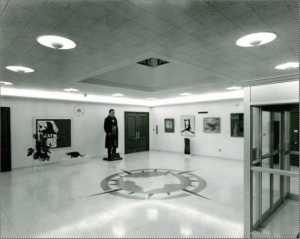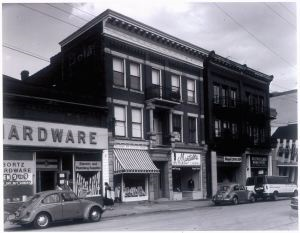1949 A Museum in the Making
A generous bequest from Greensburg resident Mary Marchand Woods establishes a museum in her hometown of Greensburg, Pennsylvania, in Westmoreland County. Inspired by her travels as the wife of a U.S. ambassador, Woods aimed to leave her community with a significant cultural institution focused on art and education. She also bequeaths the grounds of her former home, where the Museum was eventually built.

















